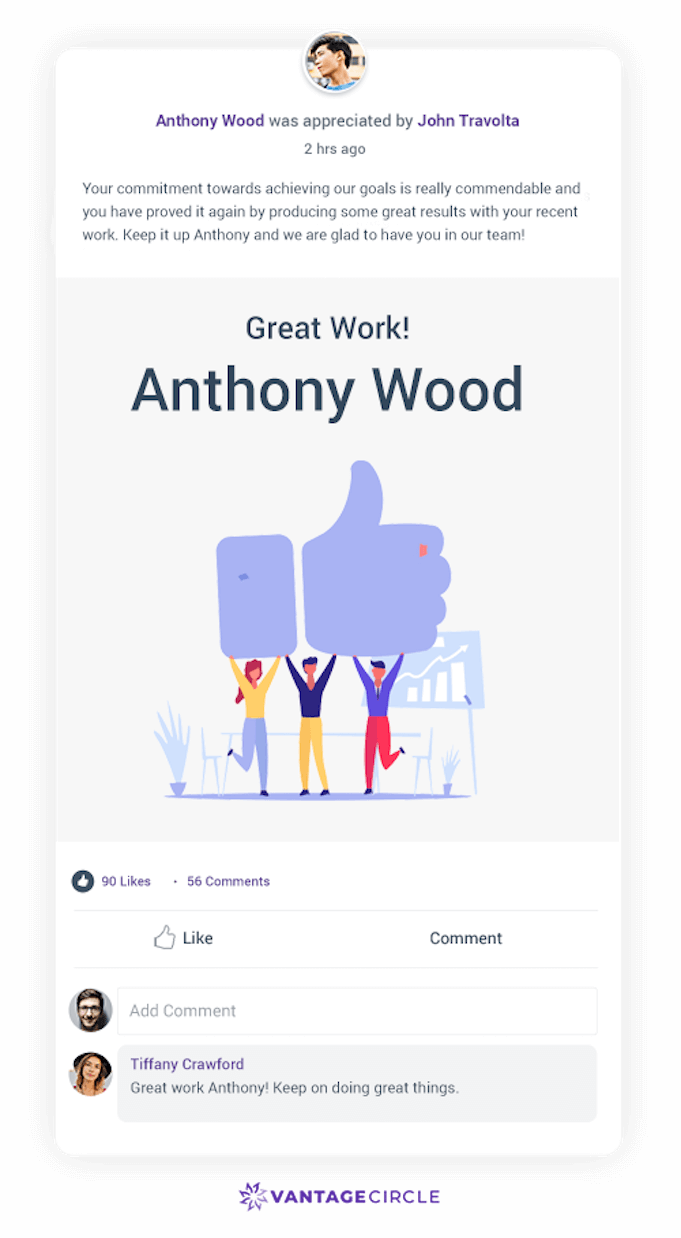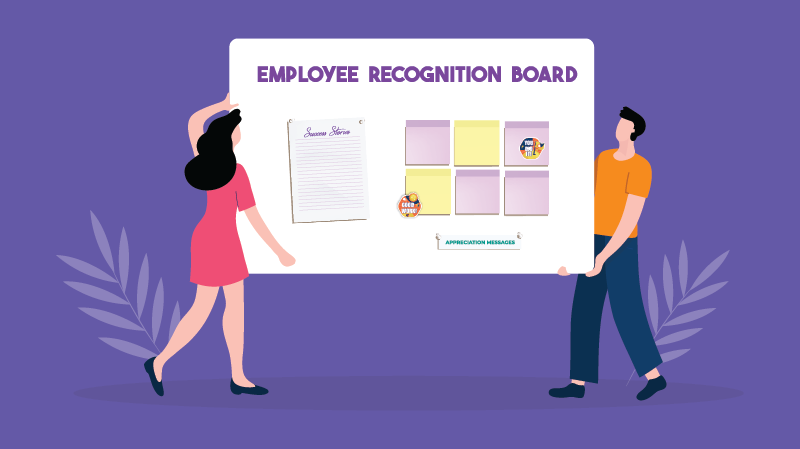10 Intrinsic Rewards That Your Employees Look Forward To
Managers frequently look for novel ways to motivate and keep their workers engaged. Making an environment where employees can obtain intrinsic rewards is one great way to achieve this goal. You can better appreciate its significance in the workplace if you understand the whole concept of intrinsic rewards.
This post will examine intrinsic rewards, their multiple types, and their advantages over extrinsic rewards.
Key Insights
- What are intrinsic rewards?
- What are the differences between intrinsic and extrinsic rewards?
- What are the advantages of intrinsic rewards?
- What are some examples of intrinsic rewards that employees look forward to?
What Are Intrinsic Rewards?

An intrinsic reward is not your regular reward that we know or understand. It is more of a psychological experience for an employee. Employees get this internal reward in the form of satisfaction that usually comes after completing their responsibilities or projects. Hence, workplace intrinsic motivation examples include recognition, inspiration, a willingness to work, and so on, primarily focused on a person's effort and ability.
Furthermore, intrinsic benefits include feelings of positivity, constructiveness, a larger good for the community, and so on.
Anything which makes a deep impression in someone's mind has a long-lasting impact. Intrinsic rewards come in this category. They are better motivators than extrinsic rewards. When employers give intrinsic rewards to their employees, they get motivated and recharged. It garners a positive and emotional reaction. It profoundly affects the behavior of employees. They show more commitment to their work which shows in the outcomes. One way to give intrinsic awards is by giving them more autonomy. Employees will feel that you trust them. And they will work harder to prove that your decision was correct. - Cynthia Hamilton, Marketing Director at Oglf.
The concept of intrinsic rewards will become comprehensible once we understand how it differs from extrinsic motivation.
Differences Between Extrinsic Rewards And Intrinsic Rewards
| Extrinsic Rewards | Intrinsic Rewards |
|---|---|
| Extrinsic reward comes from an external source, like a teacher at school or your boss at work. | Intrinsic rewards come internally from employees' inherent interest and value for their work. Achieving these rewards depends largely on one's own effort and engagement. |
| Extrinsic reward systems lose their impact over time if not increased. | Intrinsic rewards can have lasting benefits by encouraging self-engagement at work through innovation, problem-solving and improvisation. | Extrinsic rewards are both financial and non-financial. It can be both tangible or intangible. | Intrinsic rewards are only non-financial and non-tangible. |
| To get extrinsically rewarded, you participate in a sport to get the award or anything equivalent to it. | You are intrinsically rewarded if you participate only to enjoy the game rather than win the medal or the award. |
Know more here: Extrinsic vs. Intrinsic Motivation- An Overview
Advantages of Intrinsic Rewards

Internal motivation or rewards do not have any significant disadvantages. However, intrinsic rewards have a variety of benefits. Here are a few examples:
1. Makes you persistent
Individuals with intrinsic rewards are far more likely to persist in their behaviors and performances than those motivated by external rewards. Such internal motivation brings joy and self-satisfaction. As a result, there is consistency in how they perform in the long run.
2. Increased employee engagement
Any type of reward has the ability to motivate anyone to go above and beyond.
This is true, especially when we undertake work that makes us mentally satisfied and happy. We tend to indulge ourselves in it frequently, resulting in higher levels of engagement with the task.
3. Improves your efficiency in learning
Learning a new skill involves both internal and external motivation. However, retaining knowledge from a new skill and regularly re-skilling it may become more likely with intrinsic rewards rather than external ones.
4. Leads to elevated performance
When we have an intrinsic drive for work, we put in more effort than we would for any other task. It produces high-quality work, and there is a high drive for performance.
5. Keeps loyalty and dedication up
Employees who receive intrinsic rewards for doing their jobs may become more loyal than employees who do not receive such rewards or motivation. Such employees are also more likely to stay with the organization longer and with higher dedication. Thus resulting in reduced employee turnover in the long run.
10 Examples Of Intrinsic Rewards That Employees Look Forward To
1. Gaining a sense of meaningfulness

This reward is based on the significance or value of the goal you are attempting to achieve. You believe you have a chance to do something meaningful—something that matters in the larger scheme of things. You have a strong sense of purpose or direction because you believe you are on a worthwhile path.
2. Having a sense of choice
This reward involves the freedom to choose how to complete your work—to use your best judgment to select the tasks that make the most sense to you and to carry them out appropriately. You have a sense of ownership over your job, believe in the method you are taking, and are accountable for making it succeed.
3. Feeling a sense of competence

A sense of competence is another intrinsic reward when you believe you are handling your professional tasks well. Your performance in these activities meets or surpasses your standards, producing high-quality work. You feel a sense of accomplishment, pride, or even artistry in how well you perform these tasks.
4. Having a sense of progress
You feel this intrinsic reward when someone tells you your efforts are making a difference. Furthermore, you notice clear signs that things are going well, giving you the confidence to make sound decisions.
5. Feeling inspired to be more responsible
Giving new responsibilities is one way some employers indicate that their employees perform well. People driven to take on extra responsibility may have a stronger sense of success even if their role hasn't changed significantly.
6. Being an important part of an organization or team

Feeling like your role is an important part of your team or organization offers intrinsic rewards that could motivate employees to do more and stay focused.
7. Mastering of knowledge or a skill
Learning a new skill has intrinsic benefits that can lead to increased motivation. This one is relatively easy for employers to implement to reap the benefits of engaged employees by providing training and opportunity for employees to learn new skills. It could include online classes, on-the-job cross-training between roles, or informational team vacations.
8. Feeling a sense of pride
When people believe they have accomplished something big, they are prone to feeling proud. Employees gain huge intrinsic benefits from this sense of pride in the workplace. Furthermore, having people admire your effort can bring the same feeling and many additional emotional benefits.
9. Getting the choice of flexibility

People nowadays seek complete control over their work-life levels. The emphasis is on flexibility or freedom, whether at home or the workplace, during office hours, or outside. Organizations must therefore provide their employees with the environment they need to combine their priorities, health, and interests with their work to feel energized and in charge of their lives.
Know more here: Flexibility In The Workplace - What Employees Look Forward To In 2022
10. Getting generous recognition and praise
Employees who receive words of appreciation from management or their coworkers are 2.5 times more engaged than those who go unrecognized, and 90% of employees believe that receiving recognition will boost their motivation to work harder at their job. Yet, most companies don’t have an employee recognition or feedback program. Giving feedback can occur in formal or informal settings, like team meetings or coworkers passing each other in the hallway. - Thomas Lewis, CEO and founder of RIP City Reviews
Here's an example of employee appreciation from Vantage Circle's employee recognition solution.
It includes a recognition feed where employees can see, like, and comment on previous recognitions.

Picture courtesy: Employee appreciation post via Vantage Circle's Employee Rewards and Recognition Platform
Wrapping Up
The above information shows that intrinsic rewards are not dependent on external factors and entail self-directed motivation, making them stronger and more resilient to adversities. Individuals with intrinsic rewards are naturally driven to approach work with passion and inventiveness. They feel no unnecessary pressure to complete tasks in a specific time or manner and are more willing to seek novel solutions.
When it comes to determining which type of reward is a better motivator in the workplace, it really depends on the individual. Some people may be more motivated by extrinsic rewards, as 'they are tangible' and can provide a sense of financial security. Others may be more motivated by intrinsic rewards, as they provide a sense of personal fulfillment and satisfaction. - Eva Tian, Growth Strategy Manager at Mynd.
So, in conclusion, whatever type of reward you use, learning what type of motivation works best for your team will help you develop a long-term plan that works for you and your team. Once you've identified the correct type, recognition platforms like Vantage Circle may assist HR, and organizational leaders in motivating their staff by rewarding and recognizing them. It provides various choices for HR to keep employees engaged and motivated at work.
To learn more about the reward and recognition options adopted by companies worldwide, read this whitepaper on Vantage Circle's proprietary AIRe Assessment Tool.
Frequently Asked Questions About Intrinsic Rewards
1. What is an example of intrinsic vs extrinsic reward?
Answer: An example of intrinsic rewards is the fulfillment a teacher gets from seeing their students succeed.
In contrast, an employee being awarded a monetary bonus for meeting predetermined sales targets is an example of an extrinsic reward.
2. What are the motivational benefits of intrinsic rewards?
Answer: The motivational power of intrinsic reward comes from within. It fulfills psychological needs, leads to more empowered and passionate work, supports continuous growth, and cultivates loyal high-performers.


















